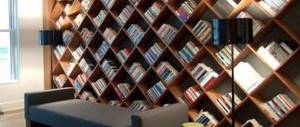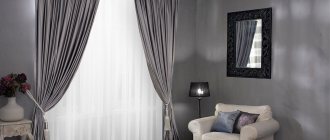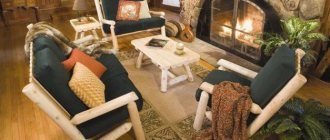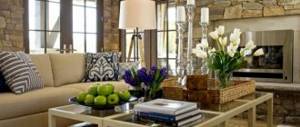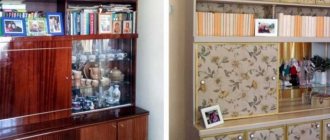The use of cardboard furniture is a very rare and rather exotic option for furnishing an apartment. It is used either by large originals, or by those who like to not only create objects with their own hands, but also experiment with materials unusual for the furniture industry. But everyone should understand that the service life of such items is very short, and it is impossible to accurately predict it. The use of the furniture may end when one of the new guests tries to use the item for its intended purpose.
DIY cardboard furniture. Sofa
Corrugated cardboard is most often used for production. Thanks to its special structure, it has significantly higher strength indicators than ordinary sheet metal. In addition, corrugated cardboard is a fairly thick material, which makes the process of creating furniture much easier.
DIY cardboard stool
Manufacturing technologies
In terms of its performance characteristics, sheet cardboard does not meet the strength requirements that exist for furniture manufacturing materials.
Corrugated cardboard
To improve these parameters, cardboard must be prepared; this is a rather long-term and labor-intensive process. Currently, several technologies are used that make it possible to obtain relatively durable products.
| Name | Brief description of features |
Layer-by-layer gluing | This technology was first used by architect Frank Gehry in the 70s of the last century. Some items from his collection are still produced today, with consumers paying up to $400 for each item. A large number of patterns of the object are cut out of cardboard, all of them are glued together. In this case, to increase strength, the layers are mixed perpendicularly in different directions. For the ends, you can use harder materials (plywood, thin boards, etc.), gluing is done with PVA or hot glue. The presence of both wavy and smooth surfaces on objects makes them look like furniture from distant Africa. Such products can be an elegant accent for luxurious interiors. |
Prefabricated furniture | The furniture is assembled from a numerous set of parts, each of which is a stiffener and can withstand significant loads. The connection is made according to the type of grooves, and the strongest five-layer cardboard is selected. If there is no industrial one, then you need to make it yourself from several single-layer sheets, glued in different directions. The overall design has relatively good strength indicators, but each individual element can quickly become damaged - this is an important drawback of furniture made using this technology. |
Frame, covered with paper | Furniture takes on a familiar look; external surfaces can be covered not only with paper, but also with special self-adhesive films imitating natural wood or stone. Due to this, the appearance of the product is significantly improved, but an additional danger appears - the risk of mechanical damage. If the consumer sees that the furniture is made of cardboard, then on a subconscious level he treats it with care. But when surfaces successfully imitate stone or wood, then quite often critical loads are applied to them. As a result, the item is completely damaged. |
Origami | Sheets of cardboard are folded using the origami method. In this way, several individual objects are obtained, which are then assembled into one structure, reminiscent of a piece of furniture. It is impossible to bend corrugated cardboard along a line; to do this, you need to cut one side of it with a sharp knife. |
Straight and curved elements | In terms of complexity, it falls into the medium category; the peculiarity is that one object has rectilinear surfaces connected to each other by sheets at angles or with a slight bend. This technology allows you to create more original forms, which expands the scope of their use. |
Modular | Furniture is made from a large number of individual load-bearing segments, interconnected according to a special scheme. The design is complex from a technical point of view; special computer programs are used for design. Hexagonal modules in furniture became very popular in the 60s of the last century, they were symbols of the hippie movement. |
We will look at making cardboard furniture using two methods.
Cardboard folding bed
Cardboard will make a very convenient clamshell. A product of this type in Switzerland costs about 400 euros, but if you make the furniture yourself, it will cost mere pennies.
- Take 7mm cardboard.
- Fold it into an accordion - you should get a zigzag design.
- Reinforce with tape running from one end to the other.
- Thick cardboard is placed on top for horizontal support.
Making a corner shelf
Step 1. Draw the shelves on the cardboard. You need to have a piece measuring 25x24.5 cm.
Cardboard blanks
Take a measuring tape, place one end of it in the corner and, using it as a radius, gradually turn it, mark the arc marks with a radius of 24.5 cm.
Outlining an arc
Step 2. Connect all the dots. Each shelf requires three blanks; glue them together with tile adhesive. We use Titan, but the brand doesn't matter.
Corner shelves, blanks
The parts need to be glued together in three pieces
Practical advice. In addition to this composition, you also need to have hot glue with a gun and ordinary PVA on hand.
Step 3. Cut out two side parts of the corner shelf, the size of one is 60x24.5 cm, and the size of the second is 25x60 cm.
Side parts
Step 4. Mark the locations of the shelves on the sides. We got the distances between the first and second 25 cm, between the second and third 24.5 cm, the thickness of the shelves is approximately 0.5 cm. You can change the dimensions, we chose these taking into account the height of the objects placed on it.
Shelf locations are marked
Step 5. Using a hot gun and Titan glue, glue the shelves. Work very carefully, do not skimp on the glue, the connection should be as reliable as possible.
Applying glue to fix the shelf
To strengthen the structure, it is recommended to fix pieces of cardboard of appropriate sizes between the shelves. They will perform two tasks: keep the ends of the shelves from falling and increase the strength of the side walls. Glue the second side panel in the same way.
Another layer of cardboard is glued between the shelves
Additional layer of glue at the joints
Complete product
Step 6. Start strengthening the bottom. Glue stiffening ribs between the two elements, the distance between them is approximately 4–5 cm. The upper plane of the bottom serves as the third shelf, and the bottom as a stop.
Bottom reinforcement
Step 7: Roll up the strip of cardboard and seal the gap under the bottom shelf.
A strip of cardboard covers the stiffeners
At this point, the assembly work is completed, you can begin decorating the surfaces.
Finishing the shelf
The ends and inner surfaces of the shelf should be covered with small pieces of white paper. The size of the sheets is approximately 5x5 cm, no more is needed. The fact is that the surface of the shelf should be as flat as possible, and large pieces of paper must have folds at the corners.
Step 1. One by one, coat the paper with PVA glue and finish the surfaces and edges.
Pasting a shelf with paper
Step 2. After the glue has completely dried, remove any smudges or ripples with fine sandpaper.
Step 3. Clean the surfaces from dust and cover them with three layers of white acrylic paint. Allow time to dry and finish with clear varnish. Choose the number of layers yourself, but experienced craftsmen recommend doing at least three. Make sure that all surfaces of the shelf are even, smooth and shiny.
Painting a shelf
Step 4. Decorate the product with braid and lace. Glue the material with hot glue; it is advisable to remove the burrs immediately, do not allow them to stick to clean surfaces.
You can decorate with lace, beads, rhinestones, sequins, stickers, etc.
Gluing the lace
To improve the appearance, you can additionally use colored rhinestones. In a word, show your creativity, decorate the shelf in a way that you personally like.
The shelf is ready and used for its intended purpose
Set of tools and accessories
To fully work with cardboard, you should stock up on:
- scissors of various sizes;
- office knives and/or medical scalpels;
- metal (plastic will not work) rulers, from 30 cm to 100 cm;
- a special self-healing cutting mat, or simply a sheet of plywood of a suitable size;
- simple pencils;
- awl;
- hot melt glue and a special gun for it, PVA glue, Moment glue and other types of glue;
- brushes for applying glue;
- sandpaper;
- damp sponge;
- varnish for interior work
- gloves to protect your hands.
Naturally, cardboard is needed, but it must be selected in accordance with the requirements of each individual project.
You should be prepared to purchase additional tools, supplies and accessories, since it is simply impossible to take everything into account at the stage of organizing the process.
Related article: DIY crib for a newborn: where to start?
Tips for use
It can take quite a long time to make cardboard furniture, and it can take a few seconds for it to break.
What are cardboard products afraid of?
- Moisture. Numerous topcoats cannot guarantee reliable protection against water.
- Heat and fire. There is no need for an open flame to ignite; the cardboard itself ignites when heated too much.
- Loads The strength of cardboard is much lower than that of all other materials used by furniture makers.
Elegant furniture made from recycled materials
Cardboard chair
Cardboard bed
The furniture is very delicate, but you will have completely exclusive products made by yourself. You can create real compositions and change them not only as they wear out, but also due to obsolescence.
DIY cardboard cat house
Modular houses made of cardboard
Video – Cardboard house for cats
Video - DIY cardboard furniture
Cardboard furniture is used to create completely exclusive interiors, in which the use of industrial designs is not recommended. For those who do not want to rest on their success, we suggest making several pieces of furniture from pallets. Detailed instructions for making a very original sofa are on the pages of our website. We strongly recommend that you read it; you will learn many interesting facts about modern technologies.
Matchbox furniture
Among the commonly used materials for the production of doll furniture are also matchboxes. They are used as bricks to create tables and chests of drawers, beds and other furniture accessories. Moreover, the finished product can be covered with colored paper or fabric, and also decorated using the decoupage technique, giving greater realism.
Matchbox furniture
Conclusion: Making paper furniture is an interesting and exciting activity that you can entrust to a child or which you can get carried away with yourself.
With due diligence, the furniture turns out almost like the real thing - elegant and stylish. Sofa made of paper Kitchen furniture made of paper Furniture made of matchboxes
